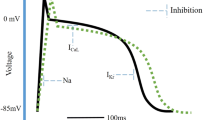Abstract
Laboratory monitoring of amiodarone therapy is recommended due to the high incidence of adverse events associated with the drug. The use of appropriate monitoring is unknown at pediatric hospitals. The Pediatric Health Information System database was queried during a 5-year period for all patients who received amiodarone while hospitalized. Use of thyroid function testing, hepatic function testing, electrocardiogram, pulmonary function testing, and chest X-ray for patients was identified. Incidence of individual monitoring tests and complete monitoring profile was identified and compared across patient demographic and clinical factors and pediatric hospital. A total of 1,703 patients met the study criteria, and the incidence of complete amiodarone monitoring for all patients was 7.6 %. The least common monitoring test performed was triiodothyronine at 19.4 %, and the most common was electrocardiogram at 89.7 %. Critically ill patients and neonates were more likely to have amiodarone monitoring. Considerable variation in monitoring practices between pediatric hospitals was identified. Monitoring of amiodarone therapy in patients admitted to pediatric hospitals is low. Future efforts to standardize care are warranted.

Similar content being viewed by others
References
Ardura J, Hermoso F, Bermejo J (1988) Effect on growth of children with cardiac dysrhythmias treated with amiodarone. Pediatr Cardiol 9(1):33–36
Birmingham WP (1998) More on an infant with acute pulmonary toxicity during amiodarone therapy. Am J Cardiol 81(9):1171
Bowers PN, Fields J, Schwartz D, Rosenfeld LE, Nehgme R (1998) Amiodarone induced pulmonary fibrosis in infancy. Pacing Clin Electrophysiol 21(8):1665–1667
Costigan DC, Holland FJ, Daneman D, Hesslein PS, Vogel M, Ellis G (1986) Amiodarone therapy effects on childhood thyroid function. Pediatrics 77(5):703–708
Coumel P, Lucet V, Do ND (1983) The use of amiodarone in children. Pacing Clin Electrophysiol 6(5 Pt 1):930–939
Flach AJ, Dolan B, Sudduth B (1984) The use of amiodarone in children. Pacing Clin Electrophysiol 7(6 Pt 1):1086–1087
Goldschlager N, Epstein AE, Naccarelli GV et al (2007) A practical guide for clinicians who treat patients with amiodarone. Heart Rhythm 4(9):1250–1259
Hacihamdioglu B, Berberoglu M, Siklar Z et al (2010) Amiodarone-induced thyrotoxicosis in children and adolescents is a possible outcome in patients with low iodine intake. J Pediatr Endocrinol Metab 23(4):363–368
Kannan R, Yabek SM, Garson A Jr, Miller S, McVey P, Singh BN (1987) Amiodarone efficacy in a young population: relationship to serum amiodarone and desethylamiodarone levels. Am Heart J 114(2):283–287
Labombarda F, Ou P, Stos B, de Blic J, Villain E, Sidi D (2008) Acute amiodarone-induced pulmonary toxicity: An association of risk factors in a child operated by arterial switch operation. Congenit Heart Dis 3(5):365–367
Lomenick JP, Jackson WA, Backeljauw PF (2004) Amiodarone-induced neonatal hypothyroidism: a unique form of transient early-onset hypothyroidism. J Perinatol 24(6):397–399
Niinikoski H, Hamalainen AM, Ekblad H, Soukka H (2007) Neonatal hypothyroidism after amiodarone therapy. Acta Paediatr 96(5):773–774
Shuler CO, Case CL, Gillette PC (1993) Efficacy and safety of amiodarone in infants. Am Heart J 125(5 Pt 1):1430–1432
Trudel K, Sanatani S, Panagiotopoulos C (2011) Severe amiodarone-induced hypothyroidism in an infant. Pediatr Crit Care Med 12(1):e43–e45
Vrobel TR, Miller PE, Mostow ND, Rakita L (1989) A general overview of amiodarone toxicity: its prevention, detection, and management. Prog Cardiovasc Dis 31(6):393–426
Wong KK, Potts JE, Etheridge SP, Sanatani S (2006) Medications used to manage supraventricular tachycardia in the infant a North American survey. Pediatr Cardiol 27(2):199–203
Author information
Authors and Affiliations
Corresponding author
Rights and permissions
About this article
Cite this article
Moffett, B.S., Valdes, S.O. & Kim, J.J. Amiodarone Monitoring Practices in Pediatric Hospitals in the United States. Pediatr Cardiol 34, 1762–1766 (2013). https://doi.org/10.1007/s00246-013-0710-8
Received:
Accepted:
Published:
Issue Date:
DOI: https://doi.org/10.1007/s00246-013-0710-8




